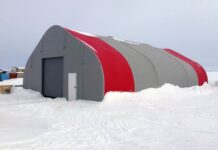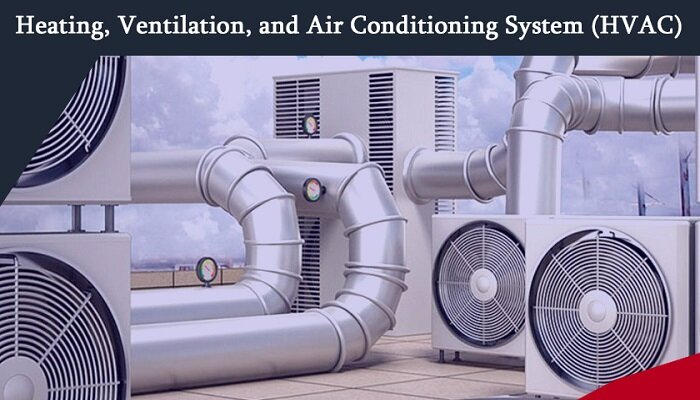The HVAC sensor is a sensor that monitors the temperature of the house. This sensor is used to control the temperature of the house, which can be set at different temperatures depending on the needs of the individual. The HVAC system can be used to provide comfort and also to save energy by adjusting the temperature according to the needs of each room in the house.
What is an HVAC sensor?
An HVAC sensor is a device that can be installed on the outside of your home to detect temperature and humidity levels. This allows you to control your home’s temperature and humidity levels from anywhere, as well as monitor for any changes in the environment.
HVAC systems use sensors to measure temperature and humidity levels. They are located in the room’s ductwork (or near it) and attached to a heating or cooling unit. HVAC sensors allow you to adjust your system’s temperature, based on your needs.
Always limit your section to a reputable HVAC & Electrical Parts Supply Store.
Where the HVAC sensor should be mounted?
HVAC sensors should be mounted near each room that requires different temperatures, such as a living room, kitchen, or bedroom. The location of these sensors will depend on where they are needed most and how many rooms they will monitor. In general, it is best if you have 2-3 sensors per room so that you can adjust for each room separately.
An HVAC sensor should be mounted on the outside of your home in an area where you can easily access it. This could be on your wall or ceiling, near an open window, or even outside. If you have an attic or crawlspace, there may not be enough space inside the house for an HVAC sensor. In this case, you can mount it on the outside of your house near one of these areas so that it can still detect changes in temperature and humidity levels.
The size of an HVAC sensor will vary depending on what type of system it’s designed for. For example, if you’re looking at installing sensors in a home with central heating or air conditioning systems, they’ll need to be smaller because they won’t need to cover such a large area inside the house. In such case, you can have Neptronic sensors at your home. If you’re looking at installing sensors in a home without central heating or air conditioning systems, then they’ll need to be larger because they’ll need to cover more space inside.
The best place for an HVAC sensor is in a protected area that is not exposed to direct sunlight or extreme temperatures. This can be a closet, under stairs, or other space that is away from direct sunlight, but still close enough to the furnace unit so that you can turn it on and off easily. The sensor should also be placed where it will not be affected by any moving parts in the system such as fans or blowers; these components often vibrate at high speeds and can damage sensitive electronics over time.
What happens if I don’t have a temperature or humidity sensor in my home?
If you don’t have a temperature or humidity sensor in your home like Mamac sensors, you will have to use the internal sensors of the thermostat to determine the current temperature and humidity levels. The internal sensors are located inside the wall cavity of your home, so you will need to open up a wall cavity and remove the screws that hold down your old thermostat. Once you have removed these screws, you can pull out your old thermostat and install a new one using the same type of power supply as before.
If you don’t have a temperature or humidity sensor in your home, you can use an IR transmitter and receiver to monitor the temperature and humidity levels in the room.
In the absence of a sensor:
- The HVAC system will run at its normal setpoint temperature. It will not be able to adjust for any changes in the indoor air. It will also likely not be able to maintain the set point temperature.
- If there is no sensor in your home, then your HVAC system will continue to run at its normal setpoint temperature until it either fails or is manually turned off by an owner (or until it loses power).
If you don’t have temperature sensors such as Siemens sensors or humidity sensors in your home, your thermostat will use the default setting as a default. For example, if your thermostat is set to 72 degrees and you don’t have a temperature or humidity sensor installed in your home, it will automatically set the temperature to 72 degrees.
If you want to change the default setting, here are a couple of things to keep in mind:
- The new setting should be within 10 degrees of the old one. If it’s too far off (more than 10 degrees), then there could be problems with the system and it may need to be serviced. If you’re having trouble changing the settings, contact your HVAC contractor for assistance.
- If you have an energy manager installed in your HVAC system, make sure that it’s using the new settings and not using the old ones (which could result in inaccurate information). If yours isn’t working properly, contact its manufacturer for assistance.
Wrapping up
An HVAC sensor is a device that measures the temperature of the outdoor air. The sensor is often mounted on the outside of your home or business, but it can also be mounted indoors.
The sensor sends a signal to your thermostat whenever it’s too cold or too hot. When you adjust your thermostat accordingly, it keeps your house at a comfortable temperature all year long.
There are many brands of sensors. Some good options are Mamac sensors, Siemens sensors, Square D sensors, Veris sensors, and Neptronic sensors, you just have to choose one for your needs.




































